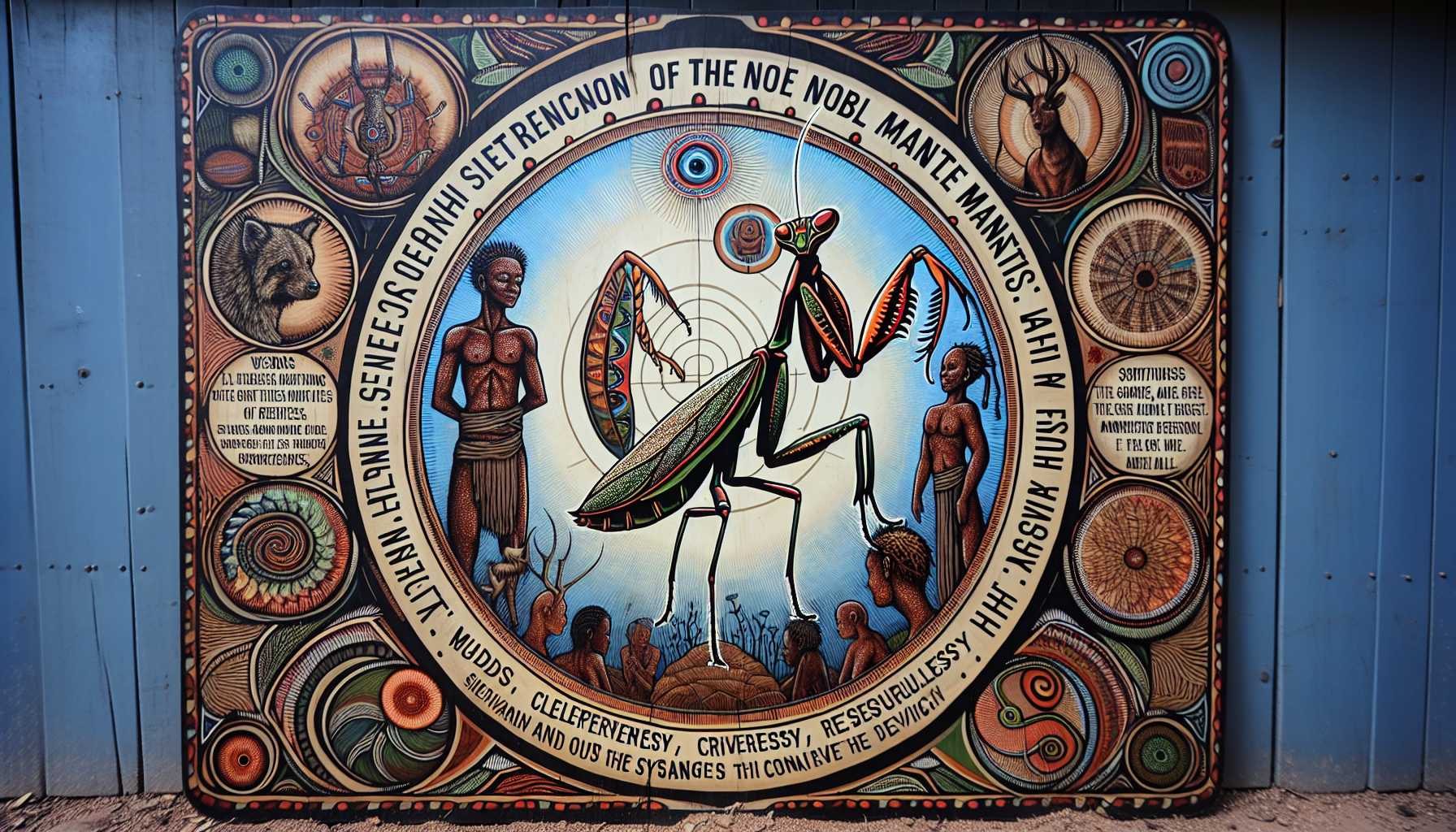
Noble Mantis in Bushman Mythology and San Culture
The article discusses the significant role of the noble mantis in Bushman mythology, particularly among the San people of southern Africa.
Kono kikai wa, Minami Afurika no San-zoku no aida de no Busshuman shinwa ni okeru Nōburu Mantisu no jūyō na yakuwari ni tsuite ronjiteimasu.
この記事は、南アフリカのサン族の間でのブッシュマン神話におけるノーブルマンティスの重要な役割について論じています。
The noble mantis, also known as the 'Mantis' or 'Insect Man,' is viewed as a central figure representing wisdom, creation, and the connection between humans and the divine.
Nōburu Mantisu wa 'Mantisu' matawa 'Insekuto Man' to mo yobare, chie, sōzō, ningen to shinsei na mono to no tsunagari o arawasu chūshin-teki na sonzai to minasareteimasu.
ノーブルマンティスは「マンティス」または「インセクトマン」とも呼ばれ、知恵、創造、人間と神聖なものとのつながりを表す中心的な存在と見なされています。
Its attributes and behaviors are interpreted as symbolic, making it a revered creature within their cultural narratives.
Sono tokusei ya kōdō wa shōchō-teki ni kaishaku sare, karera no bunka-monogatari no naka de keii o arawaseru ikimono to natteimasu.
その特性や行動は象徴的に解釈され、彼らの文化物語の中で敬意を表される生き物となっています。
Bushman myths often depict the mantis as a clever and resourceful character that possesses magical abilities and demonstrates the importance of balance in nature.
Busshuman no shinwa de wa, Mantisu wa shibashiba kenmei de shigen yutaka na kyarakutā to shite egakare, mahō no nōryoku o mochi, shizen no baransu no jūyō-sei o shimeshiteimasu.
ブッシュマンの神話では、マンティスはしばしば賢明で資源豊富なキャラクターとして描かれ、魔法の能力を持ち、自然のバランスの重要性を示しています。
Its stories serve to impart moral lessons and illustrate the harmonious relationship that the San people strive to maintain with the environment.
Sono monogatari wa dōtoku-teki kyōkun o tsutae, San-zoku ga kankyō to no chōwa no toreta kankei o iji shiyou to doryoku suru koto o shimeshiteimasu.
その物語は道徳的教訓を伝え、サン族が環境との調和のとれた関係を維持しようと努力することを示しています。
The mantis is not only a subject of folklore but also a symbol of survival and resilience, reflecting the deep-rooted connection that indigenous cultures have with the natural world.
Mantisu wa minkan denshō no taishō dake de naku, seizon to kaifukuryoku no shōchō demo ari, senjū minzoku no bunka ga shizen-kai ni motsu nebukai kankei o han'eishiteimasu.
マンティスは民間伝承の対象だけでなく、生存と回復力の象徴でもあり、先住民族の文化が自然界に持つ根深い関係を反映しています。
Through the lens of these myths, the noble mantis transcends its role as a mere insect, embodying vital lessons about respect, adaptability, and the importance of every creature in the ecosystem.
Korera no shinwa no shiten o tōshite, Nōburu Mantisu wa tan'naru konchū to shite no yakuwari o koete, sonkei, tekiō-sei, soshite seitaikei-nai no subete no ikimono no jūyō-sei ni tsuite no jūyōna kyōkun o taigen shiteimasu.
これらの神話の視点を通して、ノーブルマンティスは単なる昆虫としての役割を超え、尊敬、適応性、そして生態系内のすべての生き物の重要性についての重要な教訓を体現しています。
The reverence for the mantis in Bushman culture highlights the significance of storytelling and mythology in preserving cultural identity and ecological knowledge.
Busshuman bunka ni okeru Mantisu e no keii wa, bunka-teki aidentiti ya seitai chishiki o hozon suru tame no monogatari ya shinwa no jūyō-sei o kyōchō shiteimasu.
ブッシュマン文化におけるマンティスへの敬意は、文化的アイデンティティや生態知識を保存するための物語や神話の重要性を強調しています。
Based on this article
